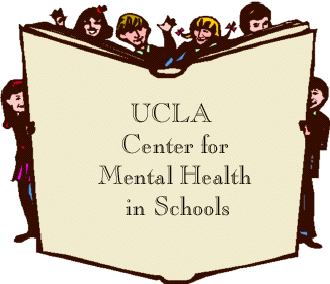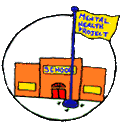

Catalogue of Special Resource Materials
Developed by the Center
![]()
UCLA School Mental Health Project / Center for Mental Health in Schools


Catalogue of Special Resource Materials
Developed by the Center
![]()
UCLA School Mental Health Project / Center for Mental Health in Schools
![]()
|
|
|
|
|
The Center is co-directed by Howard Adelman and Linda Taylor and operates under the auspices of the School Mental Health Project, Dept. of Psychology, UCLA, Los Angeles, CA 90095-1563 Phone: (310) 825-3634, Toll Free: (866) 846-4843. Support comes in part from the Department of Health and Human Services, Public Health Service, Health Resources and Services Administration, Maternal and Child Health Bureau, Office of Adolescent Health.
|
Center for Mental Health in Schools WebMaster: Perry Nelson (smhp@ucla.edu) |
 |